How to Sing Better: 40 Tips from a REAL Vocal Coach
Let’s face it:
Everyone wants to learn how to sing better.
It doesn’t matter whether you’ve been on the road for 20 years or you’re just starting out.
Here’s the bottom line:
You can improve your voice and learn how to sing better.
So, if you just googled “how do I begin to sing?” or “how do I know if I’m a good singer?”, this post is for you!
It just takes some simple and effective vocal exercises.
Rather than keep them secret, I wanted to share 40 proven singing techniques that will teach you how to sing properly today.
For organization, I’ve sorted them into 10 main sections.
They’re done in an order to take you from the practice room to the stage in no time flat.
Ready to get started? Read on.
By the way, if you want to watch a great step-by-step video that walks through all the exercises for how to sing better, for beginners and experienced singers alike, check this out:
Before we jump into the exercises, I think it’d be great to answer one of the most common questions I get: “Can you teach yourself to sing?”.
There are actually two parts to this question:
1) Is everyone physically capable of learning to sing? and…
2) Can anyone learn how to sing?
Let’s take the first part of this question first.
Is singing a talent or skill?
Many people wonder “can anyone sing or is it a gift?” and “is singing natural or taught?”
The truth is, while some people may have natural abilities, singing is primarily a learned skill. Professional vocalists – or singers as they’re formally called – develop their abilities through dedicated practice and training.
How can you learn how to sing in tune?
Studies show that, unless you’re part of 3% of the population that has tone deafness (aka “amusia”), then you can learn how to sing in tune.
A common question is “can a terrible singer become good?” or “can someone who can’t sing be taught to sing?”
The answer is overwhelmingly yes. Even if you think “Can I learn to sing if I have no talent?” or “can a bad singer be taught to sing,” vocal training can help you improve.
Whether you’re wondering “can I learn to sing at 40?” or “can I improve my singing voice by myself?” – the answer remains positive.
While working with a vocal coach is ideal, you can we train ourselves to sing through dedicated practice.
So if you look at the statistics, basically there’s a 97% chance that you can learn to sing.
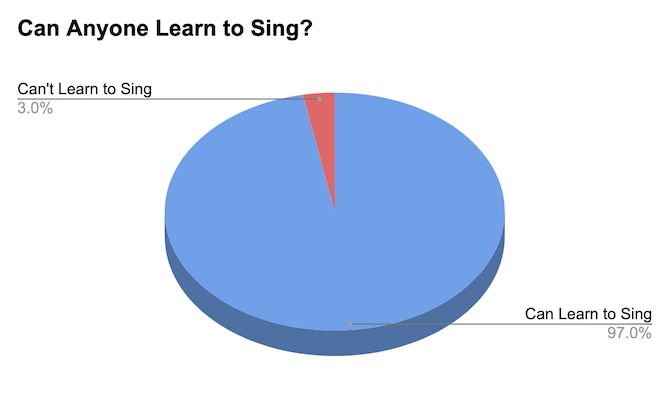
But I have to be honest:
I have taught over 1,000 students now and some of them were even assessed as “tone deaf” by their other teachers.
But here’s the crazy thing:
Every student I have worked with has been able to match pitch and tone after some simple exercises.
At what age can a child sing in tune? Usually starting around 3-4 years old.
Now, there are many people who will read this and think that it doesn’t apply to them or “I haven’t heard them sing.” But I promise you, you can learn how to sing naturally with the right techniques and instruction.
Which brings us to part 2:
Can you learn to sing or is it natural?
Many students will ask me things like:
How can I sing beautifully?
Can I learn how to sing naturally?
Can I sing if I have a bad voice?
Can I change my voice?
These are all tricky questions to answer.
Why?
Because “sounding good” is a matter of opinion (just like some people think there’s an easy way how to sing good).
For example, if you’re asking “how can I sing like Ariana Grande?”, that’s a tough one. Full disclosure here: I can’t give you an easy trick for how to sing like Ariana Grande.
But consider this: does Bob Dylan sound good? You may say no, but at one time he was one of the most popular singers in the world.
Likewise, I have taught some people that sound amazing and haven’t sold any records.
A great voice does not automatically mean success. And success does not always require a great voice.
So, if you’re asking “how can I sing with a bad voice?”, cheer up! Lots of people have found success with less-than-perfect voices.
Yes, there’s a greater chance that, if you learn to use your voice better, you will be more successful than someone who is totally untrained.
As proof, I have worked with students who have ZERO natural ability in their vocal tone but they find gigs within just a few months of working together.
The more important question is “how do you define sounding good”.
Adele has publicly talked about hating the sound of her own voice. Can you imagine?
If that’s how Adele feels, it’s very likely that you may also not like the sound of your own voice at first.
How can I improve my singing voice?
As a beginner, it can be really frightening to think about how to learn to sing. But with the following lessons on how to sing, you CAN learn to find the voice of your dreams.
You CAN learn how to sing.
These tips for how to sing better are designed for consistent, regular practice. There’s no “how to sing better in 5 minutes” or “how to sing better in a week” tricks here.
As with all things in music, the key is slow, steady improvement. These are all great things to practice singing at home on a daily basis.
As an expert vocal coach, I want to help you get there with techniques I’ve used to teach 1,000+ singers.
So even if you’ve searched the “how to sing” wikihow article or “how to sing better” youtube channels, you’ll find tons of great techniques and tips here that you won’t find anywhere else.
Ready? Let’s get started…
How to Sing Better Section 1: Sing with the Right Posture
1. The Tall Posture
How can I sing perfectly? Well, here’s the truth:
Singing with the correct posture is one of the fastest and easiest ways of improve your singing voice.
I’ve seen students whose voices are totally transformed as soon as they find the correct posture.
But what is the right posture for singing? And how does it work?
Here’s what you need to know:
The correct posture for learning how to sing singing is called a Tall Posture.
The tall posture is the best position for singing because it provides your diaphragm and throat with the support you need to sing better.
Here’s how to find Tall Posture:
- Stand up with your feet apart at shoulder width
- Make sure that your shoulders are in line with your hips and your hips are in line with your feet
- Keep your chest comfortably lifted and make sure that you’re not leaning backwards or forwards
- Allow your knees to bend slightly
If you’re doing it right, you should feel like you’d be ready to jump on a train if you needed to.
Now, watch yourself in a mirror from the side and make sure you’re keeping your posture straight and tall.
2. Don’t Lift Your Chin as You Sing Higher
Now that you have a tall posture, let’s make sure that your head and neck is in a good position for singing.
With your posture tall, make sure that your chin isn’t pointing up or down.

This is especially important when you’re singing high notes since most singers will lift their chin as they go up in pitch.
An easy way to make sure that your jaw isn’t pointing up is by thinking “down” as you go up in pitch.
Remember, the goal is to keep the chin totally straight.
3. Relax Your Throat and Tongue
With your head and neck in the right position, it’s time to check for neck and throat tension.
Here’s how you do it:
Sing a phrase of a song and watch yourself in the mirror.

If you see any tightness in your throat or face, you are probably adding tension to your voice.
The two most common areas of tension in singing are the larynx and the tongue.
So let’s check the larynx first.
In this exercise, you’ll be checking in with your larynx by feeling it between your fingers.
Never push or poke your larynx as you’re doing these exercises.
Instead, gently feel your larynx or voice box between your thumb and forefinger.
Now sing the phrase of a song and gently feel your larynx between your two fingers.
Does the larynx rise or feel tight as you sing?
If so, try this exercise.
Here’s how to keep the larynx relaxed:
With your fingers gently feeling your larynx, sing the phrase again and try to allow the larynx to stay relaxed.
In the next exercise, we’ll check for tongue tension by feeling the muscles underneath your chin.
Again, don’t push or poke the muscles underneath your chin.
Instead, gently take your thumb and feel the muscles between your voice box and your chin.

Sing a phrase and use your thumb to see if the muscles under your chin are tense or tightened.
If the tongue muscles underneath your chin feel tight, sing the phrase again and try to consciously relax them.
4. Relax Your Jaw
Here’s the truth:
The position of your jaw can change your sound dramatically.
That’s because your jaw has a lot of influence on your vocal tone and even whether you’re singing on pitch.
But here’s the bottom line:
The jaw should move freely with whichever vowel you’re singing.
Having one set jaw position for vowel will make you sound like a robot.
Here’s how to let your jaw relax:
- Select a phrase to sing that feels a bit tight or constrained.
- Now watch your face and mouth in the mirror and speak the phrase of the song you’re going to sing.
- Take note of how vertical your jaw opens as you speak the words of the phrase.
- Now, sing the phrase and allow the jaw to open to the same height as you saw in the mirror.
- Don’t let your jaw hang any lower or higher than when you speak the words.
How to Sing Better Section 2: Learn Good Breath Support
5. Sing from the Diaphragm
Let’s face it:
Learning to breathe for singing is one of the most important steps in learning how to sing.
How do you breathe while singing? Well, just like anything else, there are lots of techniques to learn to breathe for singing.
But here’s all you need to know:
Rather than taking a breath from the shoulders or chest, we’re going to inhale from the diaphragm.
Breathing from the diaphragm is the opposite of how to sing throaty.
Can you learn how to sing from the diaphragm?
I’ve created a video demonstration that teaches you to sing from the diaphragm.
Here’s how to do it:
1. Step in front of a mirror so that you can see the full length of your torso from the side.
2. Place your hands on both sides of the bottom of your stomach.
3. Open your mouth and inhale.
4. As you inhale, allow the breath to expand your stomach outward.
5. When you exhale, allow the breath to bring your stomach back in.
If you see any movement in your shoulders or in your chest, you are doing something wrong.
Please note: when done correctly, this exercise can feel a bit weird.
That’s because for most of our lives we’ve been taught to inhale by bringing our stomach in, not out.
When learning how to sing with your diaphragm, it’s important to let the stomach expand on the inhale and contract on the exhale.
A common question on how to sing reddit is “how to sing from diaphragm” and “how to stop singing from my throat.”
What is the trick to singing properly is learning to support your voice from your diaphragm rather than straining your throat.
Many beginners ask “how to sing with throat” – but this is actually what we want to avoid.
6. The Farinelli Breathing Exercise
There are tons of great exercises that will build your breath support.
But the Farinelli breath exercise is the best one for building breath control FAST when you want to teach yourself to sing.
Here’s a short video demonstrating how to do the Farinelli breathing exercise:
Here’s how to do the Farinelli Breath at home:
- Set a metronome to 60 beats per minute. No metronome? No worries. Here’s a free online metronome.
- Now, open your mouth and take a low breath from the diaphragm for 4 counts.
- Then hold the breath for 4 counts.
- Finally, exhale the breath for 4 counts.
- After completing the cycle of 4 counts, increase the count to 5.
So for the second round, you would inhale for 5 counts, hold for 5 counts and exhale for 5 counts.
As you do this exercise each day, see how long you can comfortably inhale, hold and exhale.
The moment you feel winded or have any discomfort, stop and come back again tomorrow.
You’ll be amazed at how quickly you can expand your breath control this way.
7. The Scared Breath
Now that you’ve learned to control your breath, it’s time to breathe for singing onstage.
Here’s the truth:
You probably won’t be able to take a 4-count breath when you’re singing on stage.
So how do you breathe for singing when you’re rocking out on stage?
The Scared Breath is a great way of taking a breath from the diaphragm very quickly.
Here’s a quick explanation of the Scared Breath:
Here’s how to practice the Scared Breath at home:
- Stand in front of a mirror and turn to your side so you can see your stomach.
- Now, open your mouth and take a quick inhale with your diaphragm like you’re really scared but can’t make a sound.
- Make sure that the quick breath is totally silent and doesn’t have a “gasp” sound.
- As you take this “scared” breath, watch yourself in the mirror to make sure that your stomach is expanding on every quick and silent inhale.
When done correctly, this silent, scared breath will give you all the fuel you need to make it to the next line.
How to Sing Better Section 3: Train Your Ear
8. Train Your Ear
All the breath support and perfect posture in the world won’t help you if you can’t hit the pitch you need to.
Ear training is the ability to hear a note and be able to sing it back.
This is absolutely crucial to learn how to sing on pitch.
So there are two parts to ear training:
- Training your ear to hear the note and…
- Getting your voice to hit the correct note.
I’ve written an in-depth article with 15 superior ear-training techniques that will have you singing on pitch in no time.
But here’s the bottom line:
Many people can hear a note perfectly. But they have a hard time singing it.
So, in order to make sure that you’re hearing and singing the right pitch, you just need to be able to hear the note you’re singing better.
There are lots of great tools to help you learn to hear yourself better.
But here’s an easy one you can try right now:
1. Gently wrap your fingers in a cup shape and place them behind your ears.
2. Face the direction where the music is coming from and try to match the pitch of the music.

***By cupping your ears, you’ll find that you can hear your voice so much better.
Does humming improve singing?
Yes, to some degree, you can hear yourself better when you hum so humming can indeed be helpful.
If you’re still having trouble, working with a qualified voice teacher is the best way to train your ear.
A voice teacher can immediately tell if you’re sharp or flat, but more importantly, a great voice teacher will be able to help you fix your pitch if you’re off.
9. Learn to Play an Instrument
Many students will ask me “how do you sing properly?”.
My answer sometimes surprises them.
Actually, learning to play an instrument is one of the best ways of training your ear and learning to sing properly.
Here’s why that is:
For all of its beauty, the human voice isn’t a very visual instrument.
That’s because all the mechanics of the voice are inside your voice box.
So learning to play an instrument that will help you make a direct connection between what you’re playing and what you’re hearing can help you become a better musician.
And by being a better musician, you’ll become a better singer.
So try learning an instrument such as piano or guitar.
That way, as you progress on your vocal journey, you can accompany yourself as you play.
How to Sing Better Section 4: Warm Up Your Voice
10. Warm Up Your Voice Properly
Now that you’ve got your breath and posture correct, it’s time to warm up your voice.
The vocal warm up is an important part how to learn to sing.
Unfortunately, too few singers actually do them!
But all the greats warm up every day.
Check out this cool video of Celine Dion showing Ellen her daily routine:
In a competitive industry like music, you should do everything in your power to sound your best and a vocal warm up is the best place to start.
Here’s how it works:
Even simple warm ups will increase blood flow to the vocal cords.
And if you suffer from reflux or allergies, a vocal warm up can help you clear and mucus from the vocal folds.
Keep in mind that if you have reflux or allergies, a good vocal warm up may not be enough.
Learning which foods to avoid if you’re going to sing can dramatically help you reduce the symptoms of reflux and allergies.
The end result?
Your voice works better and it sounds better.
There are lots of great warm up exercises. But here’s my absolute favorite:
11. Use the Lip Trill to Warm Up Your Voice
The lip trill is one of the safest and most effective vocal warm ups.
When done correctly, the lip trill will help you eliminate your vocal break and expand your range.
By the way, if you’re not sure what your range is currently, here’s a great article to find your vocal range in as little as 1 minute!
Here’s a video demonstrating how to do the lip trill exercise.
This exercise works really well for men and women. So, I’ve divided the exercise into “how to sing better male” and “how to sing better female”.
How to Sing Better Section 5: Sing with Good Vocal Tone
12. Don’t Sing Too Breathy
Singing with a good vocal tone is essential for sounding great to your fans.
And while every singer has their own vocal style, you don’t want to sing too breathy.
So if you notice that your tone sounds a bit breathy or light, that may be an indication that the vocal cords are too open.
If the vocal cords are open, then there will be an excessive amount of breathiness in your tone.
And that breathiness will prevent you from sounding strong.
Here’s how you can fix breathiness in your voice:
- Pick out a phrase of a song that is sounding a bit breathy
- Speak the phrase at a strong volume—like you’re trying to reach the back row of an auditorium without yelling or whispering.
- Remember that we’re not singing the phrase yet. We’re just speaking it.
- Now, using the power of your speaking voice, act like you’re a robot and “speak” the words on pitch.
- Rather than sounding breathy and light, we’re going for a strong and projected sound.
This strong, vibrant sound is called your “Chest Voice” and is your best shot at getting your notes stronger.
Hence, this is a great tip for learning how to sing better with a deep voice.
We’ll cover chest voice more in-depth in the vocal registers section.
13. Don’t Sing Too Nasally
In addition to being too breathy, it’s also important that you don’t sing too nasal.
Nasal singing happens when your vocal tone goes behind your soft palate and resonates in your nasal cavity.
Luckily, nasal singing is super easy to fix.
Check out this quick video to help you fix your nasality:
If you notice that your tone is sounding a bit nasal, try this:
- Select a phrase that has been sounding nasal.
- Now gently pinch your nose with your thumb and first finger.
- And pinch your nose intermittently as you sing the phrase.
- If you feel a vibration in your nose and fingers as you’re singing, you’re singing too nasal.
- To fix this nasality, try to direct the sound more out the mouth.
- To check whether you’re still singing too nasal, gently pinch your nose again as you sing.
- If you feel any vibration in your fingers or nose, reset and try again.
When done correctly, you shouldn’t feel any vibration in your nose as you pinch it.
The only exceptions to this rule are the “n” and “m” nasal consonants.
It’s totally fine for these consonants to vibrate a bit in your nose.
How to Sing Better Section 6: Sing in Your Different Vocal Registers
14. Find Your Chest Voice
Now that you’re singing on pitch with good vocal tone, it’s time to get familiar with the different vocal registers.
A vocal register is a series of notes in your voice that share a consistent sound and vibratory pattern in the vocal folds.
Here’s a diagram with the different vocal registers:
Confused yet? Don’t worry. It’s actually pretty simple.
The vocal registers from lowest to highest are:
Vocal Fry (not pictured above)
Chest Voice
Head Voice and…
Chest voice is an example of a vocal register.
What makes chest voice a register?
Back in the old days, singers found that notes at the bottom of their voice vibrated in their chest cavity.
So they called this the chest voice register.
With the benefit of modern vocal science, we now know that chest voice is actually created by short and thick vocal folds.
The thick vocal cords vibrate strongly against the air from our lungs.
So the chest voice is what gives singers a strong, projected sound.
How do you find chest voice?
There are lots of great ways of finding chest voice.
One of my favorites is the 5-Tone Count.
In this exercise, you’re going to use the power of your speaking voice to speak-sing the note in a 5-Tone major arpeggio.
Here’s a video demonstrating the 5-Tone Count Exercise.
15. Find Your Head Voice
Here’s the deal:
If you want to learn how to sing high notes better, you need to find your head voice.
Head voice is the vocal register above the chest voice.
You can see it here:
But what is head voice and why do you need it?
Let me explain:
Back in the old days, singers felt that the high notes in their range vibrated in their head cavity.
Singers called this the head voice register.
Now, with the help of modern vocal science, we know the head voice is produced by long, stretched vocal folds.
As the vocal folds become more stretched, they vibrate faster, creating a high note.
But since the cords are thin, they can’t vibrate as strongly as the chest voice.
So we get the breathy, fluty head voice sound.
How do you find head voice in your own singing?
There are lots of ways but my favorite technique for finding head voice is singing a narrow “ee” vowel on a descending octave arpeggio.
Here’s how to find your Head Voice:
- Pick a high note in a phrase you’d like to sing. Let’s say it’s a B4 if you’re a guy. Or a C#5 if you’re a girl.
- Now sing the note on the word “Fee” (as in “fever”)
- Once you’ve hit the note, sing the following scale using the first note as your starting pitch.

***Quick note: Whistle Register is also one of the vocal registers.
But the whistle tone requires some special techniques to sing it, so I wrote an article with 10 exercises for singing in whistle register.
16. Sing with a Mix of Your Chest and Head Voice
Now that you’ve found your chest voice and head voice individually, it’s time to start connecting them together.
Singing with your chest and head voice connected is called singing with a mix.
What the heck does that mean?
We now know that the head voice is what creates those high notes in your voice.
But since the vocal folds are thin, they lack power and sound a bit breathy.
What would happen if you added a bit of your chest voice to those head voice notes?
You would be hitting high notes with power.
To get started, I absolutely love this exercise for how to sing better for beginners:
But there are lots of great exercises to help you connect your chest and head voice to sing with a mix.
So when you’re first getting started, I like using the “Gee” exercise over a long scale.
Here’s a video demonstrating the “Gee” exercise:
A Note for Male Singers:
Many men want to know how to sing better instantly for guys.
And it’s somewhat true that many men have a more difficult time learning to sing that their female counterparts.
That’s because either due to culture or physiological differences, there are fewer men who know how to sing properly male.
The biggest challenge for most male singers is to negotiate the first passage or vocal break between the chest voice and the head voice to sing in mixed voice.
So guys, pay close attention to the next section.
17. Fix Your Vocal Break
Another benefit to learning to sing with a mix is helping you fix your vocal break.
Remember that singing with a mix means learning to sing with your chest and head voice registers connected.
If you’re using both your chest voice and your head voice at the same time, you won’t hear a vocal crack when you sing from low to high.
So how do you fix those breaks and cracks?
There are lots of great exercises to help you fix your vocal break but my favorite is the bratty “Nay” exercise.
Here’s a video demonstrating how to do the bratty “Nay” exercise.
18. Improve Your Vocal Range
Now that you’ve learned how to sing with a mix, let’s improve your vocal range.
But what is vocal range and how do you expand it?
Vocal range is a measurement of how low or high a vocalist can sing.
Here’s an example of the typical range for Tenors:

Now, most singers are trying to expand their vocal range so they can hit higher notes.
And as we discussed in the last section, high notes come from the thin, stretched vocal folds of head voice.
So how can you expand your range?
When you’re first starting to expand your vocal range, the “ng” is my absolute favorite exercise
Here’s how to Expand Vocal Range:
- Open your jaw and say the word “Rung” out loud.
- Now, repeat the word, but hold the “ng” consonant at the end of the word.
- The “ng” should feel like it’s humming in your nasal cavity.
- Now, pick a comfortable starting note and sing the “ng” sound on that note (try C3 for guys and G3 for girls).
- Sing the following long scale on the “ng” consonant.
Here’s the scale for guys:

Here’s the scale for girls:

Make sure that you’re singing on the “ng” sound, rather than an “uh” vowel.
This exercise is going to feel very nasal so don’t worry if you feel vibrations in your nose.
Want to Nail Those High Notes?
Every singer wants to expand their range. Expand Your Range Fast will show you how to finally hit high notes in your voice without straining. Expand your range by 5 notes or more!
A bit of nasality can actually help you increase your range with this exercise.
If you don’t have a piano handy or can’t read music, don’t worry.
Here’s a short video that demonstrates the “ng” exercise:
How to Sing Better Section 7: Sing with the Right Vocal Techniques
19. Practice Singing Exercises and Techniques
There are a ton of vocal techniques out there.
And like with anything, certain techniques will help you learn how to sing more quickly than others.
Sam Smith is a master of vocal technique.

But here’s the bottom line:
The best vocal techniques will teach you to sing with a mix of your chest voice and head voice.
Whether you’re trying to expand your vocal range or sing with more power, learning to sing with a mix is the quickest way to achieve your goals.
The Ultimate Trick to Singing
Many aspiring vocalists ask “what is the trick to singing?” or “how to get a good voice?”
While there’s no single magic solution, the key is combining proper technique with regular practice.
One practical way to develop your skills is learning how to sing while playing guitar or another instrument. This helps develop your musical ear and coordination.
20. Don’t Force Your Voice
Here’s the bottom line:
If something hurts, you’re doing it wrong.
As you’re learning to sing, it’s important that you don’t force your voice to do something it doesn’t want to do.
In the best-case scenario, pushing or forcing your voice will slow down your progress.
At worst, you may strain your voice.
Don’t make these common singing mistakes.
So no matter whether you’re trying to hit higher notes, or sing with more power, don’t force your voice.
Instead, find techniques and exercises that “allow” your voice to do these things.
Remember if something feels strainy, it probably is.
21. How to Sing Higher
As you continue to expand your vocal range, it’s important to learn how to sing high notes.
Rather than going to falsetto, or worse, forcing your voice on high notes, adding a bit of press can help reduce any strain you may feel at the top of your range.
This is the key to belting your singing voice without hurting yourself.
And the less you strain, the better you sound.
So how do you press down on to those high notes?
There are lots of techniques to learn to add a healthy amount of press into your high notes but my favorite is using a “Cry” sound.
Rather than the “bratty” sound, the “cry” or “attitude” sound relaxes the larynx a bit more.
And your throat needs to be as relaxed as possible when you sing high notes.
Here’s a quick video that illustrates the difference between the bratty and cry sounds:
Here’s how you can use the cry sound in your singing.
- Select a high note that you’ve been having trouble singing.
- Now pretend that you’re a child that’s very sad and sing that note on the word “Mum” (as in a British mother) with a crying sound.
- Finally, go back to the lyrics and sing the original phrase with the crying sound.
You’ll be amazed at how much easier it is to hit that high note!
22. Sing the Different Intervals
As you continue to train your ear and singing voice, you’ll want to start learning to sing the most common musical intervals.
While they may sound confusing a musical interval is just the distance from one note to another.
Musical intervals are organized according to where they fall in any given key.
For instance, the distance from C to D is a major second interval.
C to E is a major third and so on.
You can see how the different intervals are shown on a piece of music:

Now, while intervals are classified according to their distance, I strongly recommend singing the intervals using the Italian solfeggio system.
Don’t let the solfeggio system scare you.
You can easily recognize it from the song “Do, Re, Mi” from the Sound of Music.
The major scale using the solfeggio system would be written as: “Do, Re, Mi, Fa, So, La, Ti, Do”.

Now that you know the solfeggio syllables, here are the most common intervals in music so you can easily sing them.
In each exercise, sing the notes using the Italian solfeggio syllables.
Major 2nd—Do-Re
This interval is the distance from Do to Re and is easily recognized as the first two notes in “Happy Birthday”.
Major 3rd—Do-Mi
This interval is the distance from Do to Mi and you can hear it in the first two notes of “When the Saints Go Marching In”.
Perfect 4th—Do-Fa
This interval is the same one as the first two notes of the popular song “Here Comes the Bride”.
Perfect 5th—Do-So
The perfect fifth interval can be heard as the first two notes of “Twinkle Twinkle Little Star”.
Major 6th—Do-La
The major sixth interval is easily recognized as the first two notes of the “NBC” theme.
Major 7th—Do-Ti
The major seventh interval is a bit more rare in popular music. But you can find this beautiful interval in the first two notes of the chorus of “Take on Me” by A-Ha.
Octave—Do-Do
The octave interval, or the distance from the low Do to the high Do is a very common interval in music.
You can hear this interval in the first two notes of “Somewhere Over the Rainbow”.
23. Practice Scales
Now that you can sing the most common musical intervals, it’s time to begin singing scales.
A scale is a progression of different musical notes or pitches.
The solfege scale that we used in the previous section is an example of a major scale.

And the two most common scales are the major and minor scales.
Almost any piece of vocal music can be broken into one of these two scales, so it pays to be able to hear the difference and recognize them.
The major scale is the one covered by the solfeggio scale that we used for the intervals in the last section.
It starts on Do like this:
Do, Re, Mi, Fa, So, La, Ti and Do.
In any given key, the relationship between each note is the same.
In the key of C, for example, the major scale goes:
C, D, E, F, G, A, B and C.

The minor scale can also be sung using solfeggio by starting on the La syllable like this:
La, Ti, Do, Re, Mi, Fa, So and La.
Again, any time you see a minor scale, the relationships between the notes are the same.
In the key of Am, for example, the minor scale goes:
A, B, C, D, E, F, G and A.

You can find the major and minor scales EVERYWHERE in popular music.
Here are a couple examples of the major and minor scales:
The song “Lean on Me” by Bill Withers follows exactly along with the major scale in the key of C.

24. Sing the Exercises Staccato
One of the best ways to begin connecting your registers and sing in a mix is to use a staccato singing exercise.
So what is staccato and why do you need it?
Staccato is an Italian music term that simply means to attack each note separately.
Basically, singing staccato is the opposite of singing smoothly or legato.
There’s a ton of staccato singing in modern music.
Listen to Dave Grohl singing the introduction to “Best of You”:
Hear how each of those notes is attacked and separated?
But why would you want to sing that way?
When you’re first learning how to sing, your voice may need a lot of support.
And while most songs are sung as smooth as possible, when you’re learning to sing high notes, sometimes the vocal folds need a bit of help.
The staccato singing exercise gives the vocal folds the extra compression and depth they need in order to hit high notes with more power.
Here’s how you can learn to sing more staccato:
- Take a phrase of a song that you’re trying to sing.
- Rather than sing the words of the song, sing the melody on the word “Bee” (as in “Beet”)
- Try to attack each of the “Bees” separately so that the notes are punchy.
That’s staccato!
This staccato attack will help you find each note more confidently.
25. Sing the Most Common Vowels
Every voice has its own strengths and challenges.
Some voices tend to be a bit light and breathy.
Others are so strong that they push and strain to get higher notes.
But here’s the bottom line:
Some vowels will probably help you sing better than others.
Vowels, like Ah, Eh, Ee, Oh and Ooh, are categorized by the position of your tongue and the openness of your jaw.
You can see how the different vowels are grouped on this phonetic chart:

As crazy as it seems, vowels have a huge impact on how well you sing.
Here’s a quick video that explains how singing the correct vowel can help you avoid strain.
So as you start singing vocal exercises, try to find which vowels tend to work best for your voice and use them to warm up each day.
Here are a few of the most common vowels and what each of them is helpful for.
Ee (as in “Eat”)
The “ee” vowel is a close front vowel in that the tongue is in the front of the mouth and the jaw is held in a narrow position.
You can see that speech specialists put the “ee” in the top left corner of the chart since the tongue is forward and the jaw is narrow:
The “ee” vowel can be a miracle for those singers that tend to sing too heavily on high notes or strain.
Singing a simple “Gee” exercise can be a godsend for these folks.
Ae (as in “Apple”)
The “Ae” vowel is an open front vowel where the tongue is in front (like the “ee”) but the jaw is much more open.
Speech professionals put the “Ae” in the left hand side of the chart since the tongue is forward.
But because the jaw is more open than the “ee”, it’s at the bottom.
The “ae” vowel is incredibly helpful for those singers that tend to be a bit breathy or light.
If you’ve been feeling that you tend to sing a bit lightly, try singing a bright and ugly “Nae” (as in “Nasty”) exercise on those notes.
Oh (as in “Oat”)
The “oh” vowel is a mid-close back vowel where the tongue is in the back and the jaw is in a slightly close position.
The “Oh” vowel is great for singers that sing too heavily and over-press into their high notes.
Try a “No” exercise if you’re having trouble with high notes.
Uh (as in “Utter”)
The “uh” vowel is a mid-open back vowel and the tongue is slightly back and the jaw is open.
Again, the “uh” is more neutral, however since the jaw is open, we put it at the bottom of the chart (see above).
The “uh” vowel is a great solution for singers that want to get the feeling of singing in their natural voice.
Rather going to an extreme such as an “ee” or “Ae” vowel, the “Uh” tends to work best at helping singers polish their voices.
Try a “Mum” exercise before you sing a song to find the sound of your natural voice.
26. Sing With Your Larynx in a Neutral Position
As you keep hitting higher notes, you’re probably going to have problems with your larynx being too high.
The larynx, a.k.a. voice box or Adam’s apple, is a hollow organ in your throat made of muscle and cartilage.
The larynx is more prominent in men so learning to control your larynx is a huge part of learning how to sing better for guys.
The larynx contains the vocal folds and is the place where all singing comes from.
Now, many vocalists learn to sing with a mix by raising their larynx in order to get the vocal folds to compress.
The “Nay” exercise is a great example where we can hit amazingly high notes, but the larynx is a bit high.
Here’s a video where I talk about the origins of that “bratty” sound:
But a high larynx can make your tone sound a bit “squeezed” or “pressed”.
So eventually, you’ll want to learn how to keep the larynx in a neutral position as you sing.
One of my favorite exercises for allowing the larynx to relax is using the “Dopey” sound.
When done correctly, the “dopey” or “dumb” sound will allow your larynx to stay relaxed as you reach new heights with your voice.
Here’s how you do the Dopey sound:
- Take a phrase of a song that you’ve noticed that sounds a bit pinched or tense.
- Now pretend that you’re the Disney character “Goofy” and sing that note with that goofy, dumb sound.
- This may sound a bit classical or operatic to you.
- Once you’ve found that high note with the relaxed, dopey sound, sing the original phrase with the dopey sound.
- Finally, see if you can sing the phrase with a bit of the dopey feeling, without as much of the sound.
If you’re doing it right, the tone will be clear and the larynx will be more relaxed.
How to Sing Better Section 8: Sing with Vocal Effects
27. Move from Staccato to Legato Singing
Now that you’re hitting high notes with power, it’s time to get your voice ready for the stage.
Sure, those bratty “Nays” and “Gees” are great at helping you sing those high notes, but they sound pretty silly on stage.
So let’s start singing more legato.
Legato simply means singing smoothly.
Legato singing is everywhere in modern music and it is the key to how to sing beautifully.
Here’s an example of legato singing in Jeff Buckley’s version of “Hallelujah”.
Do you hear how silky smooth all of the lyrics are?
They just seem to connect so easily to each other.
Why is this important in singing?
Whereas in the past, it was important to sing your “Nays”, “Gees” and “Mums” with a bit of attack, let’s try singing phrases more legato.
In singing, legato often means just putting the emphasis on the vowels rather than the consonants.
Now, this sounds like an easy thing to do.
But, it’s actually one of the hardest.
That’s because you need to keep the same power you’ve been getting with the consonants, but with vowels.
There are lots of exercises for singing more legato but one of my favorites is to simply drop the consonants.
Here’s how you can sing more Legato:
- Take the phrase you’re trying to sing legato and take out all the consonants. For example, let’s pretend you’re looking at the first line of the chorus in “Stay With Me” by Sam Smith. The lyric is “Stay with Me”.
- Now rather than singing that staccato, let’s sing the phrase legato by subtracting the consonants.
- So in this case, you would just sing the vowels “Ay ih ee”.
- Try to keep the legato version just as strong as when you had the consonants.
- Now that you have a beautiful legato phrase on the vowels, add the consonants back in.
- This time, maintain your focus on the vowels rather than the consonants.
- So “Stay with Me” becomes “stAY wIHth mEE”.
28. Sing with Vibrato
Now that you understand the use of legato and dynamics in singing, it’s time to add everyone’s favorite vocal effect: vibrato.
Vibrato is a singing technique guaranteed to make any singer feel great about their voice.
Vibrato is a rapid, slight variation in pitch that makes a note sound like it’s shimmering or shaking.
This is what vibrato sounds like:
The ability to sing vibrato can add texture and color to any song and can be found in almost every genre of music.
There are lots of great exercises for singing vibrato, but when you’re first starting out, one of my favorites is the Diaphragm Pulse.
Here’s a great exercise to help you sing vibrato:
Pick a note from a song that you’d like to sing with vibrato.
Try to choose a note that the singer holds for a long time.
1. Bring your index and middle fingers together like you’re pointing.
2. Gently place these fingers on your solar plexus, about two inches above your belly button.
3. Now sing a note and with your stomach relaxed, use the two fingers to gently pulse against your diaphragm while you sing.

When done correctly, the pulsing of your fingers should make the note shimmer or shake.
It’s totally fine for the pitch to waver a bit at first.
You can always smooth it out later.
How to Sing Better Section 9: How to Sing for Beginners
29. Practice for 30-60 Minutes a Day
Many beginning students will ask “how can I train myself to sing?”. This is a fantastic question and it gets right to the heart of the question “how do beginners sing?”
My answer is always that in order to learn to sing, you have to learn how to practice.
Indeed, a huge part of learning how to sing is learning how to practice.
The best way of learning to sing is to create a daily practice ritual that you can do no matter where you are.
For example, in my voice lessons, I give each student singing exercises for beginners. To make sure they practice, I record each lesson and email the recordings to my students.
That way, my students have a custom tailored practice session for them to warm up with no matter where they are.
To develop your own practice schedule, find a group of 3-5 exercises that tend to work well for your voice and sing them in all the comfortable keys.
Sing these exercises for about 30 minutes daily.

This is usually the perfect amount of time to get your voice warmed up.
For the rest of the 30 minutes, practice a song you’re trying to learn.
Pay special attention to the parts of the song that are difficult for you.
If you’re having a hard time with a specific note or phrase in the song, try the note on one of the previous exercises (“Gee”, “Nay” or “No” for example) and then go back to the lyrics.
And don’t forget to hydrate and eat well when you sing!
Many singers ask: “What can I eat to train my voice?” or “What do singers drink before they sing?”
The answer is you can eat whichever foods allow you to sound your best.
Typically, I advise my students to eat lean protein, vegetables and drink tons of water!
30. Learn from Online Video Lessons
There’s a ton of instructional videos on YouTube that will teach you how to sing.
While this is a great way of learning how to sing for beginners, some of the information can be a big confusing.
In my videos, I try to make everything as simple as possible.
Here’s a video where I show you 10 Singing Techniques to improve your voice.
If you like it, hit subscribe.
But here’s the bottom line:
Learning to sing from YouTube can be challenging because every vocal coach has a different approach to vocal technique.
You can learn a lot this way, but the biggest drawback to online video lessons is that you don’t get individual feedback from a qualified instructor.
31. Invest in a Singing Course
Similar to online singing lessons, there’s no shortage of online singing courses or learning how to sing apps out there.
Some of them will even teach you how to sing a harmony.
The big advantage for taking a singing course is that they’re less expensive than working with a vocal coach.
Singing courses are also usually more organized than online video lessons.
Often with YouTube video lessons, you have to jump in to whatever the singing teacher happens to be talking about and there’s not always a lot of consistency between each lesson.
A good singing course should be able to take you step-by-step through your vocal training.
Here’s an example from a starter singing course I created:

See how each of the modules leads to the next?
The biggest strength with an online singing course is that everything you learn is cumulative.
So you’re always building on what you just achieved in the last section.
It’s difficult to find that with YouTube
If you’d like to check out my complete singing program, just visit Master Your Voice.
32. Sing with a Vocal Coach
Here’s the bottom line:
Taking lessons with a qualified vocal coach is the best way to learn to sing.
That’s because a great voice teacher can always meet you where you’re at and give you what you need to get to the next level.
Whether you’re just training your ear or trying to sing in your 4th octave, a singing teacher can help pinpoint your weaknesses.
But more importantly, a voice teacher can help you fix them.
That’s totally different from online video lessons or a singing course, where a one-size-fits-all approach may not address your specific problems.
Or worse, you waste your time trying to fix something that isn’t broken.
The truth is:
A singing teacher can give you the feedback you need to take your voice to the next level.
You can book a lesson at the Ramsey Voice Studio here.
33. Join a Choir
Once you’ve been singing for a while, it’s important to start performing in public.
Even if you’re just singing with a few friends.
One of the best ways to start singing in public is to join a choir.

And there are lots of different choirs out there.
Some have a religious basis while others focus just on pop music.
But here’s the bottom line:
Singing in a choir can be a great way to sing music with others.
Performing with a choir also takes the pressure off of performing since you’re singing with a group.
34. Join a Band
For those brave souls that are ready to rock the stage, joining a band is your next step to stardom.
Whether you’re performing originals or covers, singing for a band is great way of getting your voice heard.

With a band, you’ll have the opportunity to make music with other people.
Performing with a band is also a great way of learning to deal with stage anxiety.
If you’d like to join a band but don’t know where to start, download my free eBook “Become a Rock Star”.
It has 7 steps to get you on stage and singing fast.
How to Sing Better Section 10: How to Become an Artist
35. Find Your Unique Singing Style
As you reach new heights with your voice it’s important to find your unique singing style.
Here’s the truth:
Most people can improve their singing, but finding a unique voice is difficult for many singers.
That’s because most singers learn by imitating others.
That’s great when you’re first starting out but at a certain point, it’s important to start branching out to find your own style.
Working with a qualified voice teacher is the best way to sing in your true voice.
But here’s a great exercise for helping you find your unique voice:
- Pick out a phrase of a song that you’d like to sing.
- Rather than singing the words, sing a clear “Mum” (as in a British mother) on the melody.
- Take note of the relaxed and natural sound of the “Uh” vowel in your voice.
- This is the sound your natural voice since the “Uh” relaxes all the jaw, tongue and palate.
- Now, go back and sing the phrase, trying to imitate the feeling of the relaxed “Uh” vowel as you sing.
When done correctly, the “Mum” exercise will help you find a truly natural and relaxed feeling when you sing the phrase in your own voice.
36. Get Inspired by Listening to Great Singers
Another crucial part of developing your unique vocal style is listening to great singers.
There are tons of phenomenal singers that represent the best at what they do.

Determine the genre that you want to sing and look for heroes in that genre—both past and future.
Take note of what that singer did to master their craft.
What are the strengths in their singing and music?
And as you start writing songs, think about where you can stand out in your genre.
Are you going to become a mind-blowing singer?
A soulful songwriter?
Or a poetic lyricist?
All the best singers have one or more of these traits.
Which ones will you develop?
37. Learn the Lyrics So You Can Focus on Your Singing
We’ve all been there.
You’re on the spot.
The pressure’s on, the mike hisses with feedback and you forget the words.

But it doesn’t have to be this way!
There are lots of great tricks for memorizing lyrics, but it all comes down to this:
You need to memorize lyrics so that you can focus on your singing.
Singers are storytellers.
And like any good storyteller, how you tell the story matters.
So by getting the hard part done and memorizing the lyrics first, you’ll be so much more capable of conveying the emotions and story of the songs you sing.
Here are 10 tricks to help you memorize lyrics twice as quickly.
38. Learn Microphone Techniques
Now that you’re singing high notes and vibrato with ease, it’s time to get you performing like a pro.
To get started, purchase a microphone and practice singing with it in a private space.
The microphones at venues vary a lot.
So it’s good to be familiar with some of the most common mikes and know how to use them.
Most of the microphones you find in live venues will be some version of the Schure SM58 microphone.
You’ll recognize this standard ball mike from almost any performance you’ve been to.
The SM58 is rugged and durable.
Now here’s all you need to know about mike technique:
The ideal position for singing into a microphone is One to One-and-a-Half inches away from the center of the ball of the microphone.
Check out this picture of a guy singing into a Schure SM-58.

That’s the perfect distance.
This distance and position for singing in the mike will help you sound clearer and brighter than any other technique.
And if your mike sounds great, your job gets a lot easier.
39. Choose Songs that Fit Your Voice
“How do I train my voice?” many students ask me.
Well, a crucial part of finding your unique voice is choosing songs that fit your voice.
Once you’ve found the genre you want to sing, it’s important to find songs that fit your voice and personality.
Here’s a video explaining some of the important criteria for picking songs:
The first factor in picking a great song for you is to know your voice type and range.
If you know that the notes in a song are within your range, then odds are it could be a great song for you.
When selecting songs to practice with, start with simple, well-known tunes.
Learning how to sing happy birthday correctly, for example, is an excellent way to practice pitch control and breath support while working with a familiar melody.
Another thing to consider when looking at songs to sing for beginners is to make sure you have an emotional connection with the song.
Once you’re at the pro level, you’ll be practicing and performing a song tens or even hundreds of times.
If you have a connection to the song you’re singing, it’ll be much easier to express yourself, no matter how much you sing it.
One last criterion for choosing a song for your voice is making sure that is has good vocal technique.
You’ve come a long way to make sure that you’re hitting high notes without straining or breaking.
It would be a shame to lose that.
But there are singers and songs with great vocal technique in every genre.
Here’s a playlist I created with tons of great singers for vocalists of all levels.
40. Be Patient
Learning to sing can seem really overwhelming for people who are just starting out.
There are no “how to sing better instantly” tricks out there.
But I promise you this:
Anyone can learn to sing. You CAN teach yourself how to sing.
It just takes learning some special singing techniques and practice.
So I wanted to put together the best resources I could to help you learn on your own.
But, if you’d like to jump right in, please check out my online singing course: Master Your Voice.
Or consider taking a private lesson with me.
Happy singing!
Want to Nail Those High Notes?
Every singer wants to expand their range. Expand Your Range Fast will show you how to finally hit high notes in your voice without straining. Expand your range by 5 notes or more!






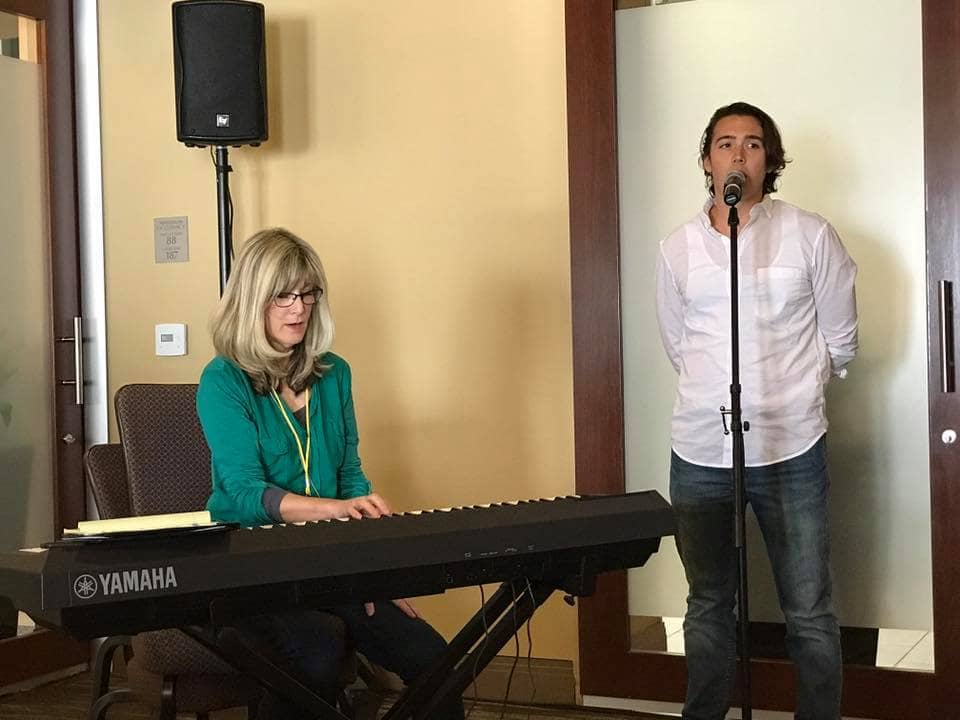
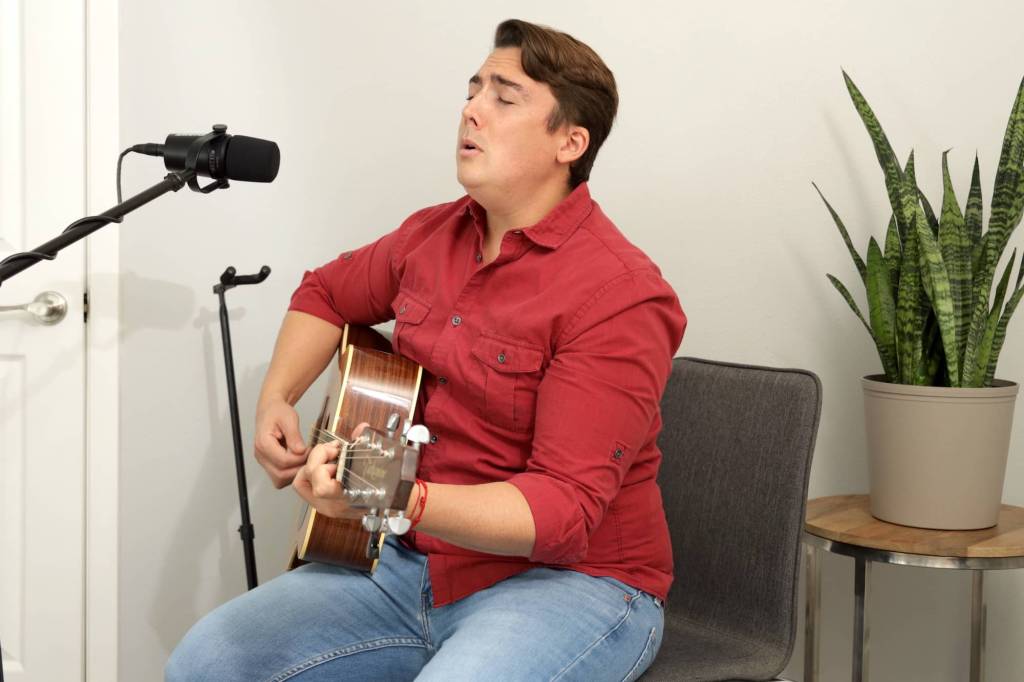
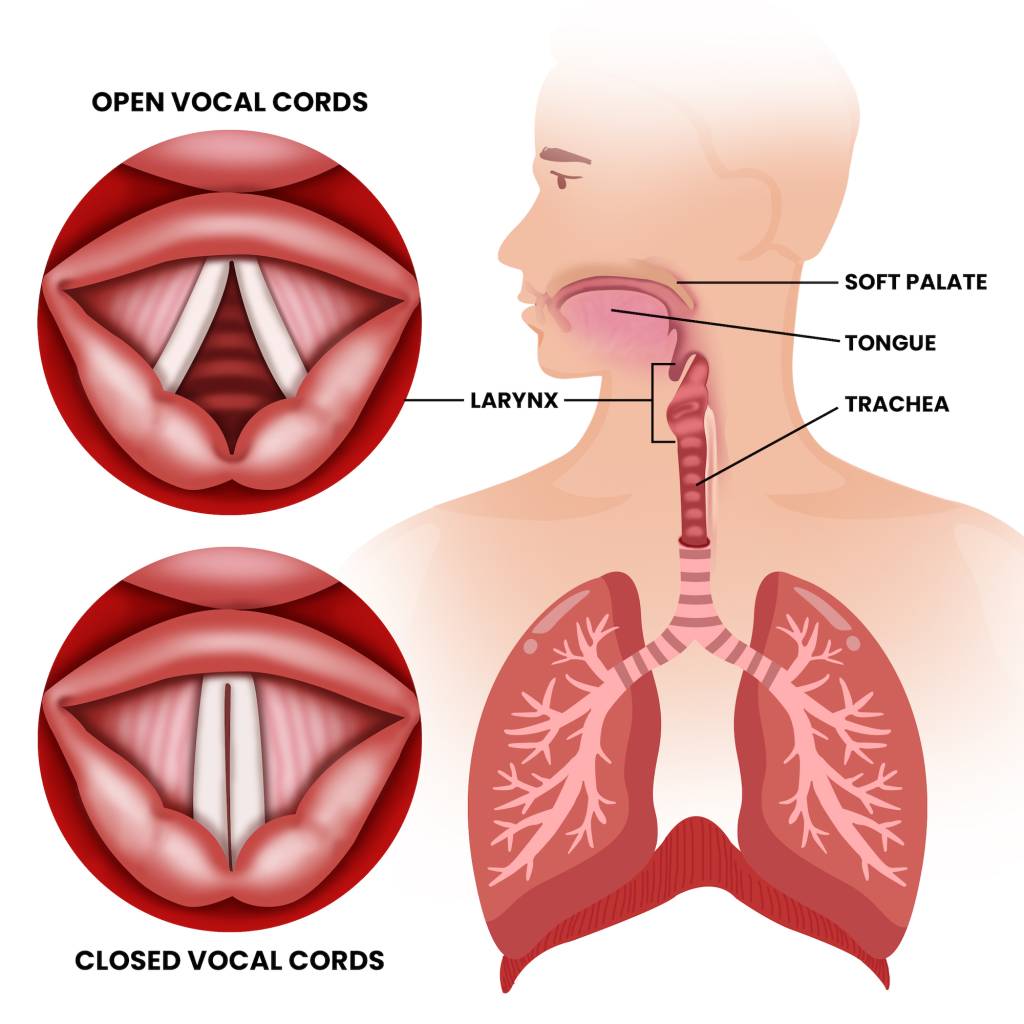
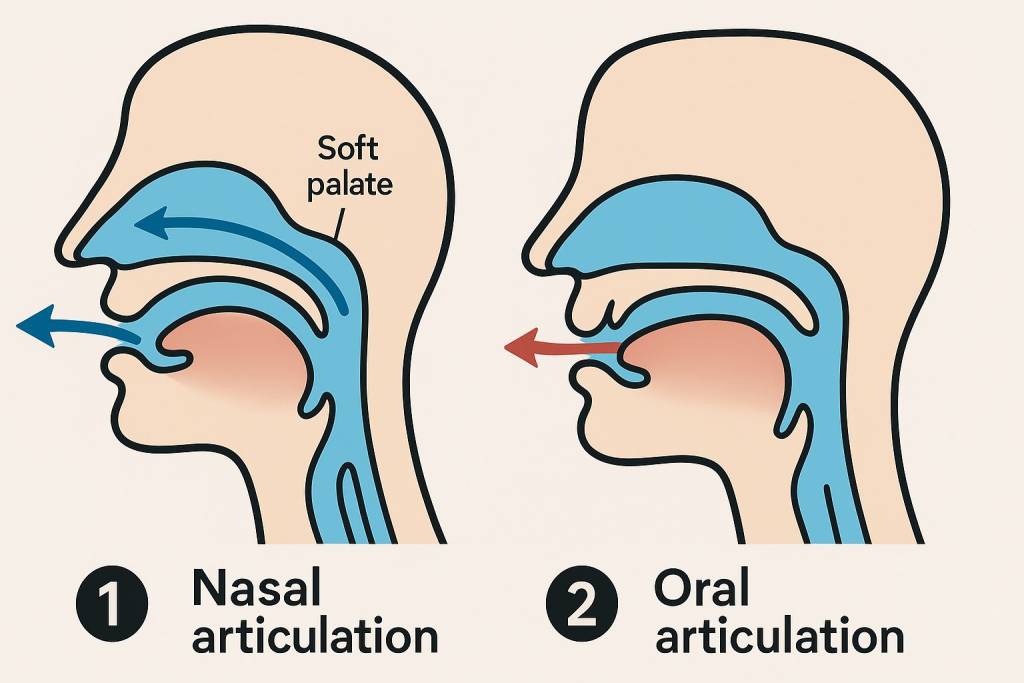
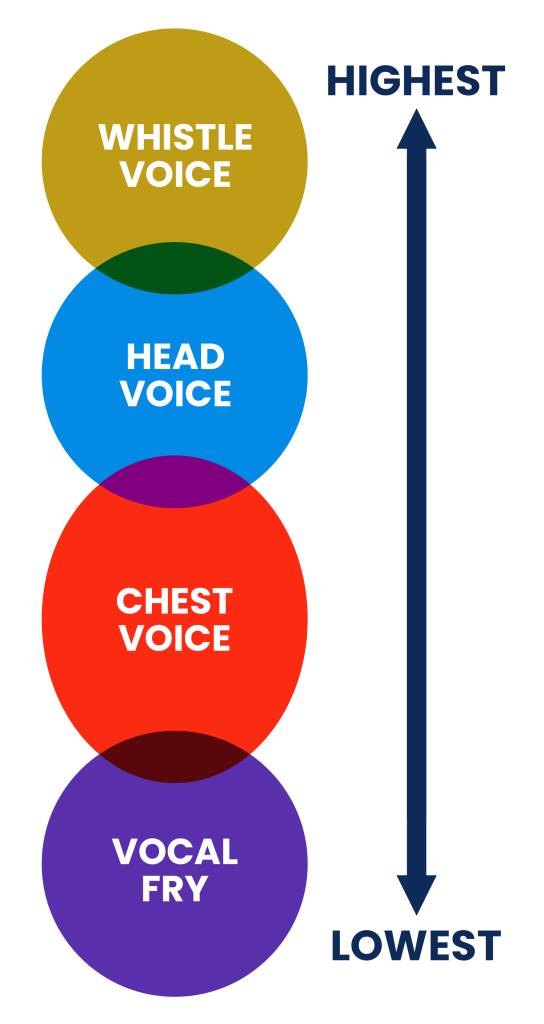

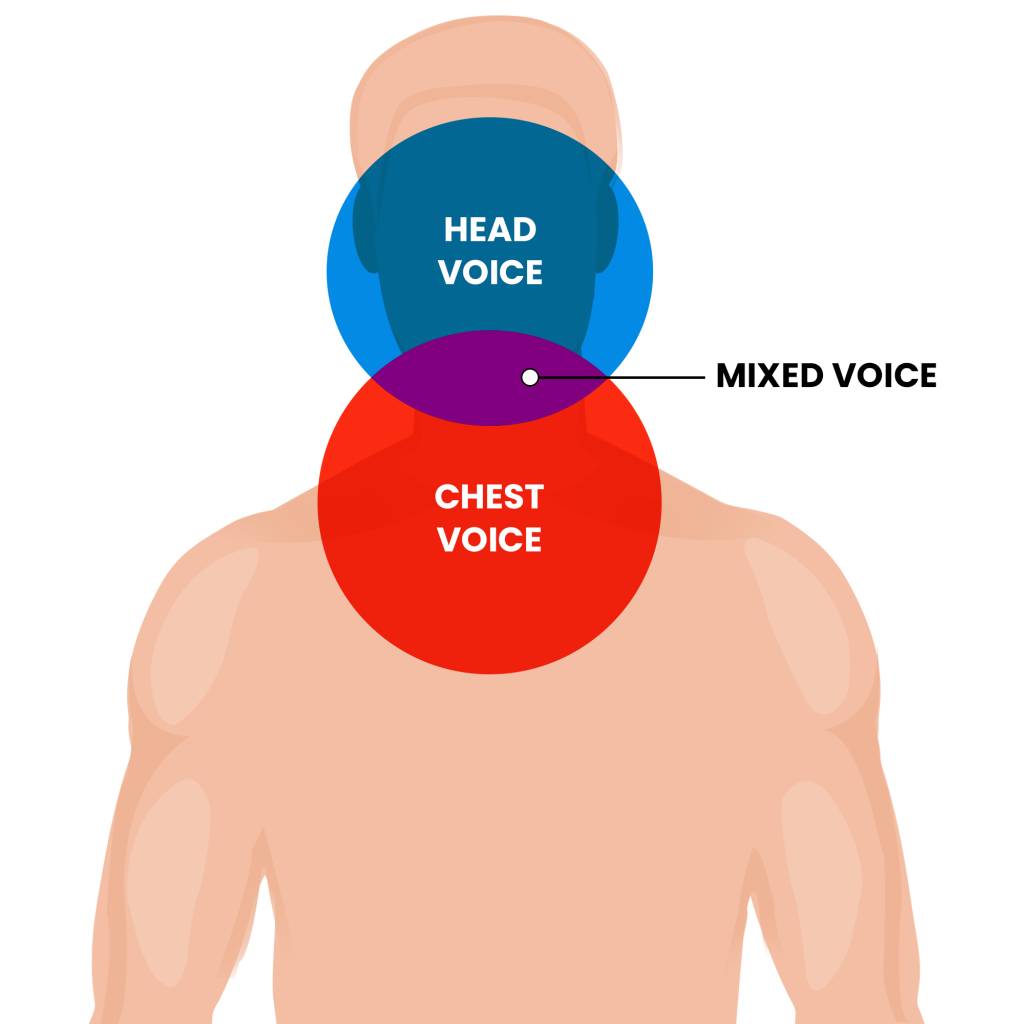



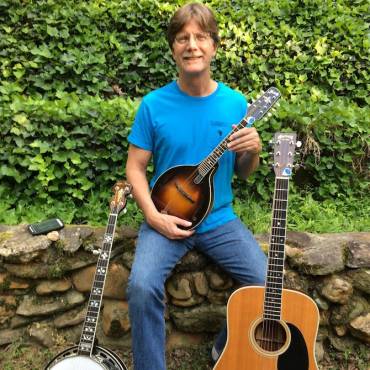

40 Comments
Great stuff! Thanks for sharing!
Thanks David!
I INEED A VOICE LESSON BECAUSE WAS LISENING TO MUSIC VIDEOS AND THEY WERE NO WORKING SO CONTACT ME AT 7328281262 OR TEXT ME WHEN YOU GET A CHANCE THANKS BYE.
Hey Sarah, I’d be happy to help, you can book a 50% off first lesson here: https://ramseyvoice.com/book-singing-lessons/
Very GOod METHOds of SINGING.
Thanks Mp3joli!
Woaaahh !! What a banger !! This is the most complete singing article about Learning to sing effortlessly. Why aren’t you famous still ?
Wow Nithin, I really appreciate your kind words. I’m so glad that you found it helpful!
Awesome stuff matt! thanks for putting this together it is extremely helpful. I have a question about warming up. How long before a recording session or a performance should you warm up? and for how long should you warm up without completely tiring out your voice for the session? SHould there be a rest period between warming up and actually getting to recording?
Hey Luis, great question.
I would recommend warming up for 30 minutes early in the day you’re going to record.
Then, do another 15-30 minutes about an hour or two before your recording session.
Do not eat or sleep between this second warm up and your session.
The idea is that you want to be warming up throughout the day, rather than packing it all in at once.
Awesome stuff matt! thanks for putting this together it is extremely helpful. I have a question about warming up. How long before a recording session or a performance should you warm up? and for how long should you warm up without completely tiring out your voice for the session? SHould there be a rest period between warming up and actually getting to recording?
Hey David, great question!
I would recommend warming up for 30-45 minutes, 2-3 hours before a recording session.
This is the perfect amount time to get your voice warm without wearing it out.
Then I’d recommend a second warm up of about 15 minutes, directly before you start doing vocal takes.
Hope that makes sense!
Hi matt Ramsey! Me and my friend are YouTubers and we wanted to record 5 quality music videos by the end of may! We read your article. It is really good. We are doing a passion project in LA which is why we are commenting. We would Like to know some great tips on recording music videos. In general we want to know some good recording tips and voice tips.
Thanks!
Andrea
Hey Andrea, thanks for your message. That’s awesome about your project. I’d love to give you more in-depth tips. Maybe a lesson is a good idea. Why don’t you DM me and we can work out a trade of some sort. [email protected]
These are great! I just have one problem. I am very self-conscious about practicing around people. Mainly because practicing will feel more like performing when I know people are around which makes me too embarrassed to experiment with my voice. Most of the time someone is around. I only find myself alone a few days a week.
Any word of advice? Thanks
Hey Sonny, I feel you!
When I first started taking lessons, I was sharing an apartment in San Francisco with 5 other roommates.
But I was serious about improving my voice, so I practiced every day.
And let me tell you: they hated me.
But in the end, becoming a singer means coming to terms with the fact that you have to practice even when it’s not optimal.
You can work out times when they’re out or sing in the car.
But you shouldn’t bend over backwards to avoid being heard. After all, that’s your job.
Really Helped Im better at singing and Breathing!
I can really sing low notes now! Thanks Matt!!
You’re so welcome Neriya!
Woow woow. This so incredibly amazing. A great, motivational tutor you are. Thank you for being motivational. Very easy to understand… Now that’s what teaching is all about?????
Thank you for your kind words!
Matt, incredible these tips, helped me a lot. I take a question, please, what is the ideal time to voice warm up before a performance?
Hey Mark I would recommend warming up 2 hours before a big performance, then a really quick 5 minutes right before you go on stage.
Great question!
Thanks Matt! I really found this helpful since I’m a beginner at singing and I really want to improve my singing .. I have a question. When I sing something I sound great and sometimes I just don’t.. What should I do to just stick to my same singing track ?
Hey Kelly, what you’re talking about is learning to control your voice no matter what you’re singing.
What I would recommend is finding a fantastic exercise for your voice, then singing the melody of a song with that exercise, then finally adding back in the lyrics.
When you go back to the lyrics, try to get the same feeling the exercise gave you.
Hi Matt, Are online lessons effective? Such as skype lessons or Online vocal courses? I always believEd that online voice lessons/Courses would be difficult and not as effecTive, but Now as we live during a pandemic and social disTancing is more encouraged, I Feel Online voice lessons are worth looking into.
Hey Sonny, online lessons are great.
Always best to be in the room, but just not possible for everyone.
By the way, you can book a half-price first online lesson here: https://ramseyvoice.com/book-singing-lessons/
thankS MR. Matt FOR PUTTING OUT A GREAT BODY OF WORK HERE FOR THE ENTIRE WORLD TO LEARN FROM YOUR CREATIVE WEALTH OF MUSIC WISDOM. WHEN I SING, I SOMTIMES EXPERIENCE MY WORDS BREAKING BEFORE COMPLETING A PHRASE. PLEASE HOW CAN I CORRECT THIS. THANKS
AYOOLA
Hey Ayoola, thanks for your kind words. It sounds like there’s one of two things happening:
1) You’re not getting the right breath before singing the phrase or
2) You’re singing too lightly (not enough chest voice) and your voice is breaking as a result.
You can find answers to both of these in this article.
You are way too far ahead. I downloaded an ear training app. It starts off with ‘sing a note’ (only whole tones – no sharps or flats). You need to get 75% to move to the next stage. I got 28%. when it said i’d got one right, i didn’t know i’d done it. How do you sing a note???
Hey Nigel, you’re referring to ear training. You’re going to love this: https://ramseyvoice.com/ear-training/
wow thats amazing
Glad you liked it!
how long until you see RESULTS
Hey John, you should see results within a couple months.
Very good
Thank you!
extremely helpful. thank you so very much
You’re very welcome!
Your the best guy was really helpful.
Hope to see the end result of this soon.
Keep up the great work David!